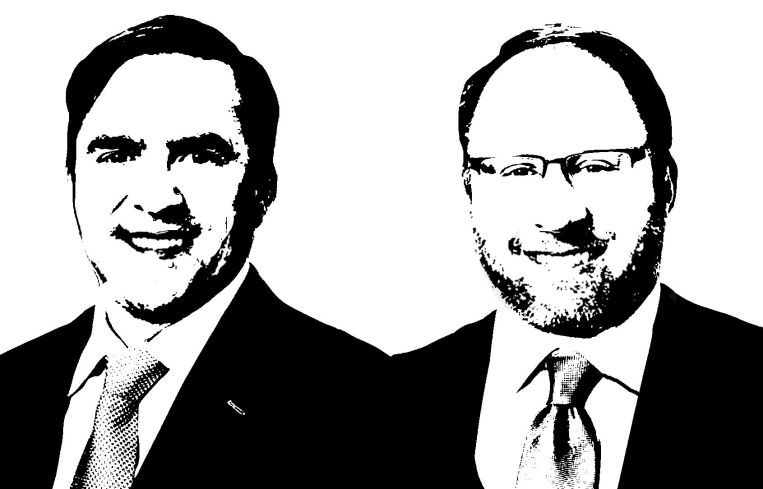The Anatomy of a CRE Loan Workout
By Mitchell Hunter and Robert Brasfield April 8, 2020 7:30 am
reprints
Imagine the preparedness a firefighter has before going to sleep at night. Their gear is organized. The truck is gassed up. The keys are nearby. They are ready for chaos at a moment’s notice. If the alarm sounds, an immediately executable, well-rehearsed plan is in place. During these chaotic times, commercial real estate lenders (whether they’re using internal asset management or third-party credit managers and servicers) need to be thinking like a firefighter.
Those of us around for the 2008 Great Financial Crisis (and similar past events) graphically recall the horror stories between lenders and borrowers. Lessons learned from past crises tell us that having operations organized and teams identified and prepared for trouble could mitigate future issues while preserving time and profits.
Let’s dust off our tools and put them to use.
Cash Management
Become very observant with your cash. Monitor your monthly operating statements and rent rolls. If you have a lockbox or cash management account in place, it’s important to check it for deposits early and often. Deposits made to a lockbox offer immediate insight. While checking monthly statements is important, they come a full 30 to 45 days after the month’s end, leaving you at a disadvantage.
It’s also prudent to request a report of outstanding payables from borrowers. Borrowers, especially ones who are short on cash, may start making those payments from equity and there may be a tendency to slow-pay or triage other vendors at the property. An aged-payables report can help reveal borrowers that may be attempting to hoard cash.
Getting a 90-day payables report (or outstanding payables report) could reveal increases in the amount of payables 60 or 90 days past due, which may suggest that a borrower is using cash flow for improper uses when such cash should have been allotted to pay obligations in the loan documents. Understanding operational nuances, particularly sources and uses of cash, will be vital as you formulate a plan of action. It’s imperative that you’re getting the full story on your borrowers – the good, the bad and the ugly. Every bit of information helps to paint the full picture.
Legal Preparedness
Before a workout can commence, it’s important to be aware of every potential default your borrower has committed or might commit, including past defaults that have been subsequently cured. Understand what your borrower has going on, not just with your asset, but with all assets where they may have an economic interest. Monetary defaults, together with other material financial covenants, can have teeth and can present immediately actionable protections. However, technical defaults may be more difficult to act upon, but should be carefully tracked. You should consult your advisors, including legal counsel and your entire credit management team to definitively understand your options from each default scenario. Ensure that you have your Notices of Default, Pre-Negotiation Agreements and Reservation of Rights letters up to date and in compliance with applicable jurisdictions.
There’s a wide range of preparedness actions lenders can take to protect their options and enhance their chances of a successful investment outcome, even in the face of a difficult borrower or market circumstances. Scenario and sensitivity analyses are key; begin before things get ugly.
Based upon past cycles, it’s been too common for some lenders to do nothing in the face of known issues, operating with a “wait and see” mentality. Don’t confuse patience for preparedness. It’s fine to be contextually patient, but it’s not fine to lack a plan, particularly one that contemplates varying future circumstances. It is also very difficult to qualitatively and quantitatively analyze your scenarios and sensitivities if you have never worked through a default of similar nature. Get people on your team that are non-conflicted and have done it before. There’s nothing like fact-pattern recognition to improve your chances for a successful outcome. Finally, be willing to allow your plans to iterate. Time is often your enemy, so don’t forgo prudent action while you seek perfection.
Communication & Market Intelligence
Like a team of firefighters at the scene of a blaze, persistent communication amongst your entire credit management team is vital. You cannot over-communicate. However, be extra careful with your borrower communications during these times and make sure you are acting with the guidance of counsel. Loose statements, however well-intended, can be dangerous and can have potentially adverse impacts on your future options.
Assumptions and preconceived notions are also dangerous. Don’t assume the worst or the best. A borrower who hasn’t timely delivered their month-end financials may be hiding something; they may also just be overwhelmed or bogged down with non-compliant, evasive or similarly overwhelmed tenants, contractors, and governmental agencies, among others. We recommend, particularly early in the default process, a lot more questions than statements as you gather intelligence. Even when you’re stressed or angry, do your best to dispassionately gather the facts.
Market intelligence is also critical. There are a wide range of resources that you can consult, including brokerage leasing and sales reports, supply and demand trends, demographics, economic forecasts, costs and availability of capital, among others. Today, many of these resources are “open source” and can often be obtained with a little investigation. When you assemble your credit management team, also be mindful of their resources. Don’t just rely on third-party data designed generically for broad consumption. Work with professionals that understand, market, sub-market and asset-level data derived from their own portfolios and experiences. Remember, you’re in fact-gathering mode. The more actionable intelligence you can derive the better your chances are for a successful outcome.
Mitchell Hunter serves as president and Robert Brasfield serves as a managing director focused on non-performing assets, both for the Americas, at Trimont Real Estate Advisors.



